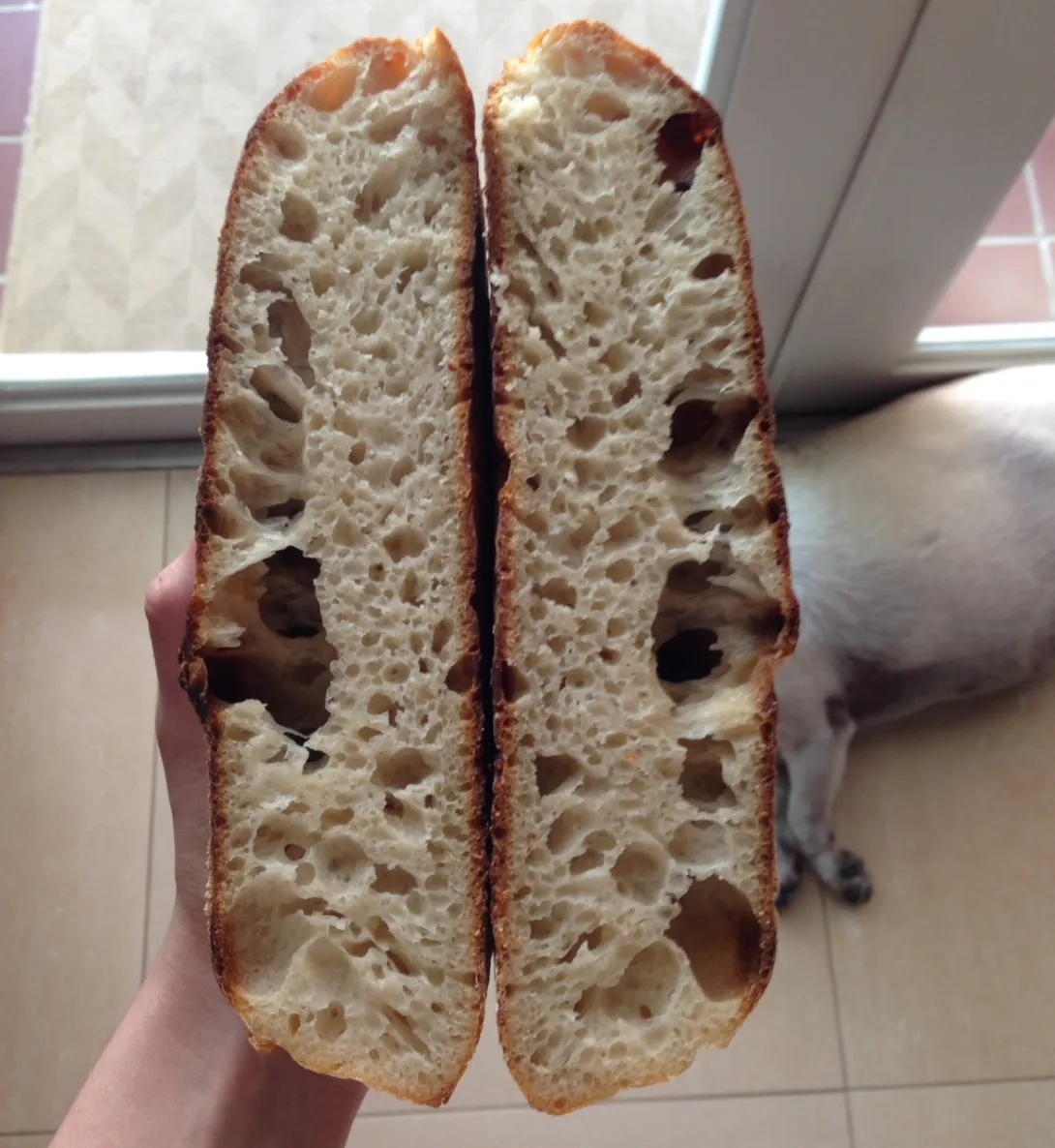
Hello! I was invited by a chemistry professor to speak about how I make my sourdough bread. The challenge is that I only have 1 hour and 30 min on Tuesday and 1 hr and 15 min on Thursday to make the bread from start to finish.
My first approach consisted in mixing all ingredients - making a very wet dough - and do a rushed bulk fermentation at 90C for an hour and 20 min (with some turns at the 30 and 60 minute mark). Then roughly shaping - more like pinching at the best of my ability - and leaving in the bannetons for the 48 hrs in the fridge, taking them out an hour or so before baking (I can sneak in the lab and pull them out) and baking them in a dutch oven.
I tried this method and even though the bread tastes delicious, the loaves are very flattish (which is uncommon in comparison with other loaves I bake using the Tartine method) and have no oven spring (which I have sort of gotten used to...any tips?).
The picture is the one I have included, pug for kicks
However, I have been thinking about replacing that slow bulk fermentation with some french kneading. So what I have planned is autolysing for 20 min (325g water + 400g flour), then add the 80g of starter and the salt and knead french-style for about 10 min. Leave them alone for 20 min to bench rest and then shape and put into the bannetons for the 48 hrs in fridge. The baking would be the same as above.
Should I fix the no-knead method or go ahead with the French kneading one? Any alterations or recommendations regarding any of the two would be very helpful,
Thank you in advance and sorry for the long question!
Hi MT,
Why change what you commonly do? If you use the Tartine method you stretch and fold, right? You also get the Oven Spring, you desires? Then why use no-knead or French kneading? After all the theme is "How you make your sourdough bread", am I wrong?
Why not use the method they use for television filming, with several stages prepared in advance? That way, you can demonstrate the various stages the classes may find most interesting or useful, and not have to rush your process. A proofed loaf baked during the session will provide the requisite aroma, even as prepared samples are cut and shared to the group.
Lotta work? Yep. Guaranteed repeat invitations? Oh, yes.
Cathy
I'm completely with Cathy on this one. From what you write, the idea is not to demonstrate how to make a bread over the course of 48 hours, but rather how to make a bread. What if the class only met once a week? then you'd have to come up with a fermentation method that encompassed 200 hours!
Calculate your mix on the second day so that it is at the point of "next step", you may have to prepare a third batch that is already proofed and ready for scoring and to hit the oven deck. And a fourth that is just out of the oven which has time to cool down prior to slicing and tasting.
That's show business!
alan
It seems your loaf is over proofed from 48 hours in the fridge. That seems an awfully long time. you might be better off making a new batch of dough for the second session that is properly prepared time wise.
unless you mean the loaf proofed for too long without a folding. I think the dough could have used another folding in the same time frame deflating the x-large bubbles to get a more even crumb. The bottom inside of the crumb does not indicate over fermenting. Contrarily, the lower half of the loaf looks perfect. I'd say it was a Q of distribution of gas bubbles. Another fold might get you more tension and the spring you want.